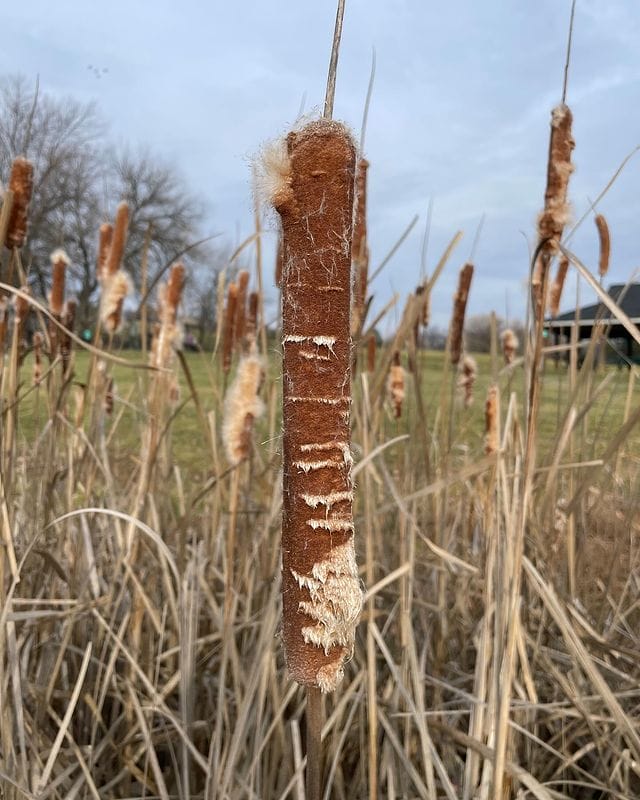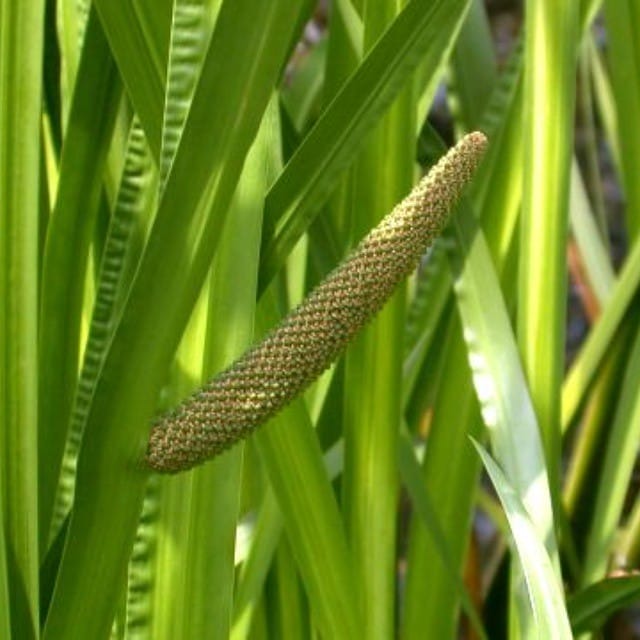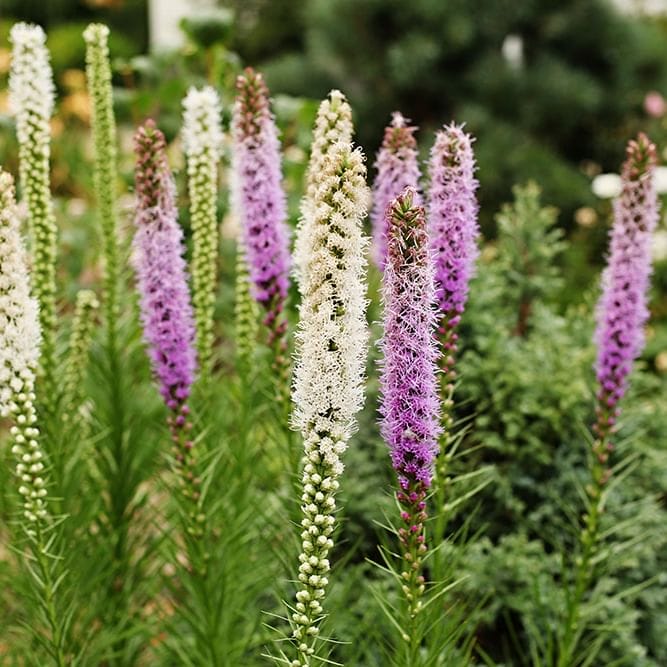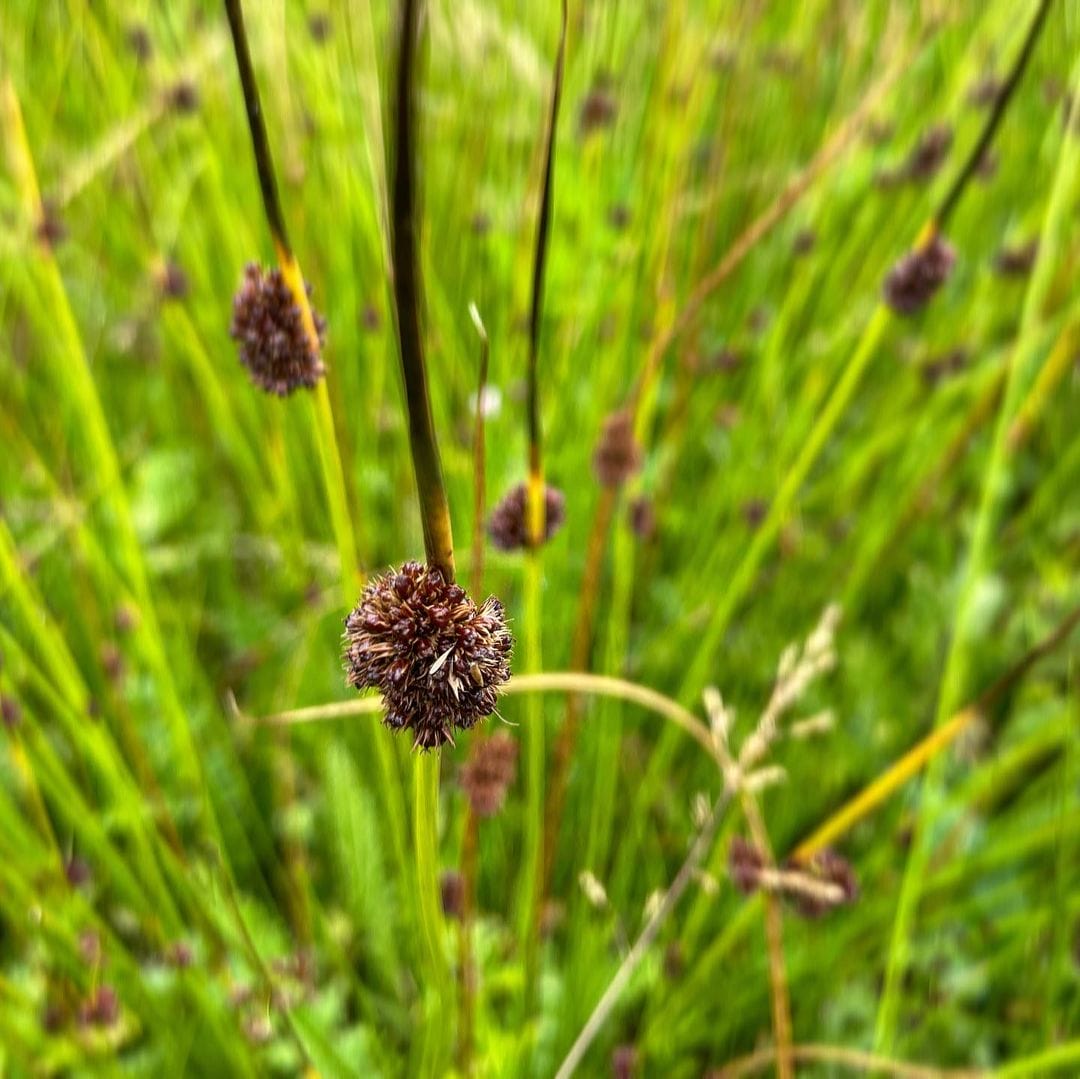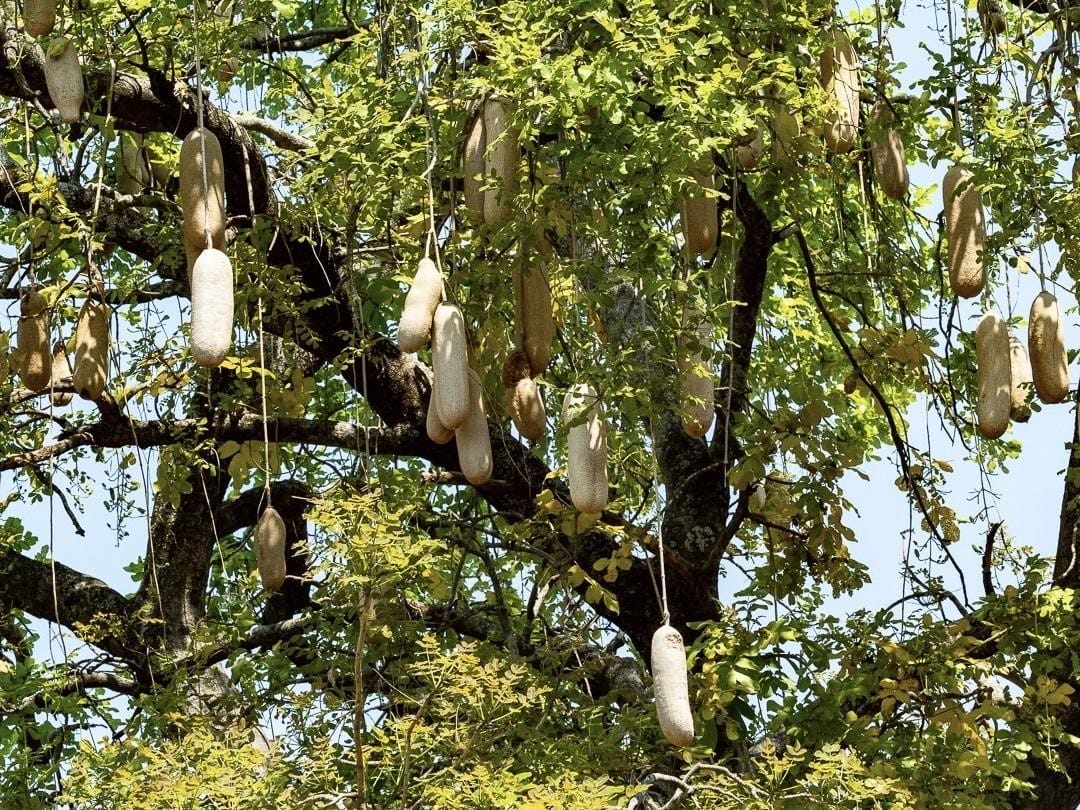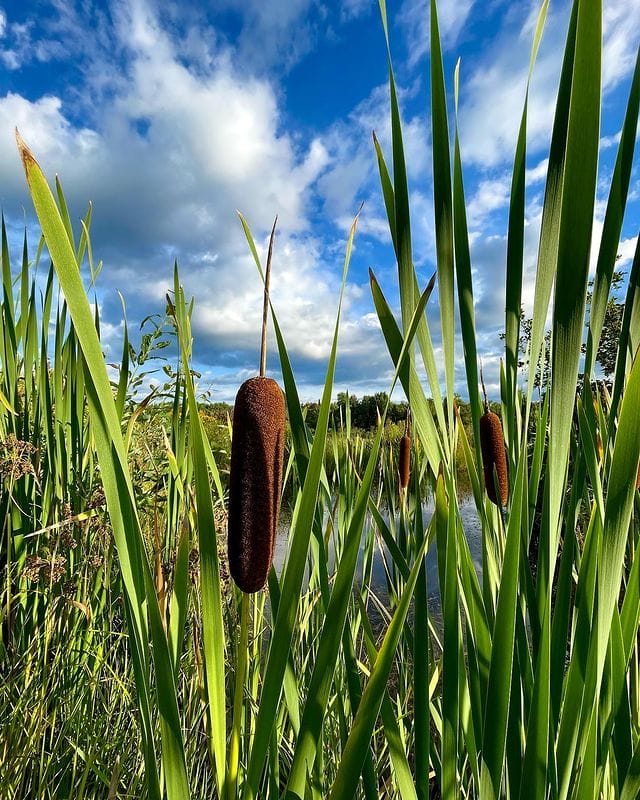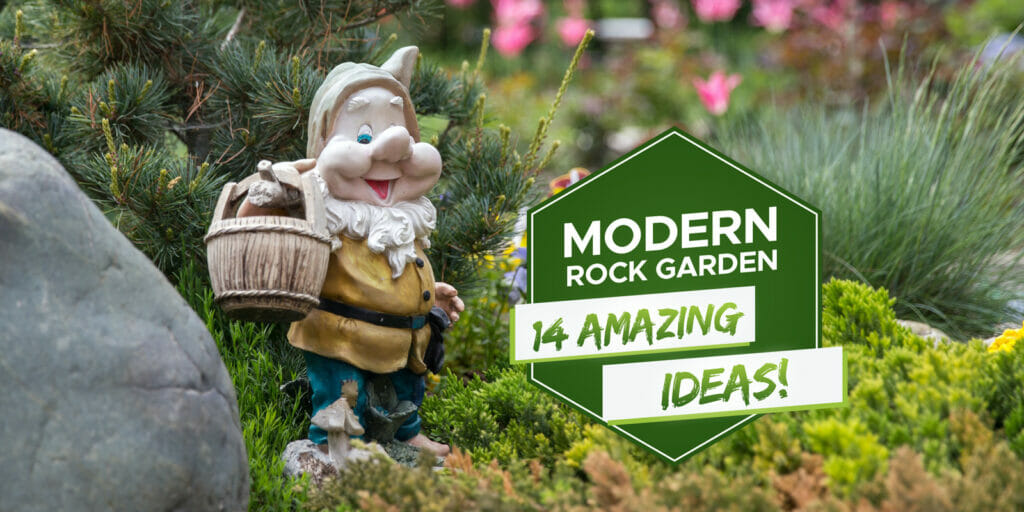Plants are known to come in various shapes and sizes, but have you ever come across a plant that looks like a corn dog? Yes, you read that right!
There are plants out there that resemble everyone’s favorite carnival food.
These plants are not only fascinating to look at, but they also serve an important role in their ecosystem.
One such plant is the cattail, which is a type of wetland plant that has a long cylindrical brown spike that resembles a corn dog on top of a tall stem.
Cattails are not only visually appealing, but they also provide a habitat for various animals and help improve water quality by filtering out pollutants.
While these plants may look like a tasty snack, it’s important to remember that they are not edible!!
In fact, some plants that resemble corn dogs can be toxic if ingested.
It’s always best to admire these unique plants from a safe distance and appreciate their role in the environment.
5 Plants That Look Like Corn Dogs
Typha spp. (Cattails)
Typha spp., commonly known as Cattails, are distinctive wetland plants known for their tall stature and unique, corn dog-like flower spikes. They belong to the family Typhaceae and are native to a wide range of regions, including North America.
- Diverse Uses: Historically, cattails have been used for various purposes. Their fluffy seeds are excellent tinder for starting fires, their leaves can be woven into mats and baskets, and certain parts of the plant are edible.
- Ecological Importance: They provide habitat and food for wildlife, help filter pollutants from water, and their dense growth can help stabilize shorelines.
- Edible Parts: Young shoots, roots, and the lower part of the flower spike are edible in spring. However, ensure proper identification and preparation before consuming.
Cattails are commonly found throughout North America. They thrive in wetlands, marshes, the edges of ponds and lakes, and along slow-moving rivers. They prefer full sun and can often be seen forming dense stands in shallow water.
Can You Grow Them? Yes, cattails can be grown, but they need a suitable wet environment. They’re often used in constructed wetlands for wastewater treatment and in water gardens.
Considerations:
- Invasiveness: Cattails can spread rapidly and might crowd out other plant species in small ponds or wetlands. Regular maintenance is required to keep them under control.
- Wildlife: They provide excellent habitat and food for a variety of wildlife, including birds and amphibians.
Acorus calamus (Sweet Flag)
Acorus calamus, commonly known as Sweet Flag, is a perennial wetland monocot that belongs to the Acoraceae family.
It’s notable for its sword-shaped leaves and a spadix (flower spike) that resembles a slender corn dog.
Native to Asia and North America, Sweet Flag has a rich history of medicinal and aromatic uses.
- Aromatic and Medicinal: The plant has a sweet, fragrant scent, especially when the leaves are crushed, leading to its common name. It has been used in traditional medicine for a variety of ailments, although modern users should exercise caution and consult healthcare professionals due to potential toxicity.
- Cultural Significance: Sweet Flag has been used in various cultures for centuries. In Ayurveda, it’s known as “Vacha” and has been used to treat a range of conditions. Native Americans also used it for medicinal purposes.
- Wildlife Habitat: While not as robust a habitat provider as cattails, it does offer shelter and food for some wildlife species in wetland areas.
Sweet Flag is commonly found in the northern United States and Canada. It thrives along the edges of marshes, swamps, ponds, and slow-moving streams. It prefers shallow water or very moist soil and is often found in the same environments as cattails.
Can You Grow It? Yes, Sweet Flag can be grown in suitable environments. It’s often used in water gardens and for natural water filtration in constructed wetlands.
Considerations:
- Invasiveness: While generally not as invasive as some other wetland plants, it can spread in ideal conditions. Always monitor its growth and manage as necessary.
- Toxicity: The plant contains compounds that can be toxic if ingested in large quantities. It should not be consumed without proper preparation and understanding of its properties.
- Biodiversity: It can contribute to the biodiversity of wetland areas, providing aesthetic value as well as some ecological benefits.
Liatris spicata (Blazing Star)
Liatris spicata, commonly known as Blazing Star or Gayfeather, is a striking perennial native to North America.
It’s part of the Asteraceae family and is highly appreciated for its tall, dense spikes of vibrant purple flowers, which add a burst of color to gardens and natural landscapes.
- Butterfly Magnet: Blazing Star is particularly known for attracting butterflies, bees, and other pollinators with its nectar-rich flowers, making it a favorite in pollinator gardens.
- Flowering Pattern: Unlike many plants, Blazing Star blooms from the top down on its spikes, creating a unique and prolonged display of color through the summer and into fall.
- Herbal Uses: The roots of Blazing Star have been used in traditional medicine by Native Americans to treat various ailments, reflecting the plant’s versatility beyond its ornamental value.
Liatris spicata is native to the eastern United States and parts of Canada, particularly thriving in meadows, prairies, and open woodlands. It’s also a popular addition to gardens due to its striking appearance and ease of care.
Can You Grow It? Absolutely. Liatris spicata is a hardy and versatile plant that adapts well to a variety of garden settings, making it a popular choice for both novice and experienced gardeners.
Considerations:
- Invasiveness: Blazing Star is not generally considered invasive and typically stays where planted, though it can self-seed if the conditions are right.
- Wildlife Benefit: Its ability to attract butterflies and bees makes it an excellent choice for those looking to support local ecosystems and pollinator populations.
- Cut Flowers: The flower spikes make excellent cut flowers for arrangements, lasting long in a vase and adding vertical interest.
Juncus effusus (Soft Rush)
Juncus effusus, commonly known as Soft Rush, is a perennial wetland plant belonging to the Juncaceae family.
It’s known for its green, cylindrical, and unjointed stems that create a lush, grassy appearance.
Native to various parts of the world, including North America, it’s a common sight in wet meadows, marshes, and along water bodies.
- Versatile Uses: Historically, Soft Rush has been used for various purposes, from making rushlights by soaking the pith in fat to weaving mats, baskets, and chair seatings.
- Ecological Role: It plays a significant role in wetland ecosystems by providing habitat and stabilizing soil, thus preventing erosion along shorelines and in marshy areas.
- Growth Habit: Unlike many plants that grow in a bushy or spreading manner, Soft Rush grows in clumps, with each stem shooting straight up from the base, creating a very structured and tidy appearance.
Juncus effusus is widespread across North America. It’s commonly found in wet and marshy areas such as the edges of ponds and lakes, wet meadows, and ditches. Its preference for moist conditions makes it a staple plant in these ecosystems.
Can You Grow It? Yes, Soft Rush can be grown quite easily, especially in areas that mimic its natural wetland habitat. It’s often used in water gardens, rain gardens, and for natural landscaping in wet areas.
Considerations:
- Water Requirements: Soft Rush thrives in wet conditions and will do best in an environment that can provide this. It’s not suitable for dry, arid areas unless supplemental watering is provided.
- Invasiveness: While generally not considered invasive, it can spread in ideal conditions. Monitor its growth, especially in small garden ponds or confined spaces.
- Wildlife Habitat: Providing shelter and breeding grounds for various wildlife, it’s an excellent choice for naturalistic landscaping aimed at supporting local ecosystems.
Sausage Tree (Kigelia africana)
Kigelia africana, commonly known as the Sausage Tree, is a distinctive and remarkable tree native to the tropical regions of Africa.
It belongs to the Bignoniaceae family and is renowned for its unusual, sausage-shaped fruits that hang from long, rope-like peduncles.
The Sausage Tree is not only an eye-catching ornamental plant but also holds cultural and medicinal significance in many African communities.
- Unique Fruits: The tree produces large, woody fruits that resemble giant sausages, sometimes growing up to 2 feet long and weighing around 15 pounds. These fruits are a distinct feature and give the tree its common name.
- Medicinal Uses: Various parts of the tree, especially the fruit, have been used in traditional African medicine to treat a range of ailments, from skin conditions to gastrointestinal issues. However, the raw fruit is toxic and should not be consumed without proper preparation.
- Night-Blooming Flowers: The tree has large, reddish-purple flowers that bloom at night and emit a strong, fruity fragrance. These flowers are pollinated by bats and nectar-feeding birds.
While native to Africa, the Sausage Tree has been planted in tropical and subtropical regions worldwide, including parts of Florida, California, and other areas with similar climates. In its native habitat, it’s often found along riverbanks and open woodlands.
Can You Grow It? Yes, it can be grown in regions that offer a tropical or subtropical climate. However, it’s a large tree and needs ample space and the right conditions to thrive.
Considerations:
- Space Requirements: Sausage Trees can grow quite large (up to 60 feet tall), so they require ample space. They’re not suitable for small gardens.
- Toxicity: The raw fruit is toxic and should not be consumed without proper preparation. Always consult with a knowledgeable source before using any part of the tree for medicinal purposes.
- Ecological Impact: In its native environment, it plays a crucial role in the ecosystem, providing food for animals and a habitat for various species. In non-native areas, consider the ecological impact and ensure it won’t become invasive.
Botanical Characteristics of Corn Dog-Like Plants
When it comes to plants that look like corn dogs, there are a few key characteristics to keep in mind. These plants are typically found in wetlands and marshes, and they often have long, cylindrical spikes that resemble the shape of a corn dog.
One of the most common corn dog-like plants is the cattail. These plants have tall, slender stems with brown cylindrical spikes at the top that look just like a corn dog. Cattails are often used in landscaping for their aesthetic value, and they can be found in many different regions around the world.
Another plant that resembles a corn dog is the bulrush, also known as the reedmace. This plant has a long, cylindrical brown spike that sits atop a tall stem, just like a corn dog. Bulrushes are also commonly found in wetlands and marshes, and they can be used for landscaping purposes as well.
In addition to cattails and bulrushes, there are a few other plants that look like corn dogs. The miniature cattail, for example, has a smaller spike than the common cattail but still has a similar cylindrical shape. The common rush, also known as soft rush, is another plant that can resemble a corn dog with its tall, thin spike.
Overall, plants that look like corn dogs share a few key characteristics, including tall, slender stems and long, cylindrical spikes. These plants are typically found in wetlands and marshes, and they can be used for landscaping purposes or simply appreciated for their unique appearance.
Habitats and Ecosystems
Plants that look like corn dogs can be found in various types of wetlands, including marshes, swamps, and bogs.
These wetlands are typically characterized by waterlogged soils, high humidity, and a variety of aquatic plants and animals.
Wetlands are essential ecosystems that provide a range of benefits, including water filtration, flood control, and habitat for various species.
Ponds and Lakes
Plants that look like corn dogs can also be found in ponds and lakes. These bodies of water are typically characterized by still or slow-moving water and a variety of aquatic plants and animals. Ponds and lakes are important ecosystems that provide habitat for various species, including fish, amphibians, and birds.
One of the most common plants that look like corn dogs found in ponds and lakes is the blue flag iris.
This plant is known for its tall, blue spikes that resemble corn dogs.
Other plants that look like corn dogs found in ponds and lakes include the yellow flag iris and the corkscrew rush.
These plants are also known for their long, cylindrical spikes that resemble corn dogs.
Uses in Landscaping and Design
When it comes to landscaping and design, plants that look like corn dogs can add a unique touch to your garden or outdoor space.
Here are a few ways you can incorporate these plants into your landscaping:
1. Water Features
Plants that look like corn dogs, such as Typha Laxmannii and Typha Minima, are often found in wetlands and marshy areas.
This makes them a great addition to water features in your landscaping, such as ponds or fountains.
Not only do they add a unique look to your water feature, but they also help to create a natural and calming atmosphere.
2. Borders and Edges
Common Cattails, which are one of the plants that look like corn dogs, can be used to create borders and edges in your garden or outdoor space.
Their tall and slender shape makes them a great choice for creating a natural-looking border around your lawn or garden beds.
They can also be used to create a natural-looking barrier between different areas of your outdoor space.
3. Visual Interest
Plants that look like corn dogs can add visual interest to your outdoor space.
Their unique shape and texture make them stand out from other plants in your garden or landscaping.
You can use them as a focal point in your garden or as a way to add interest to a dull or empty corner of your outdoor space.
Frequently Asked Questions
What is the botanical name of the plant commonly referred to as the ‘corn dog plant’?
The plant commonly referred to as the ‘corn dog plant’ is a type of succulent that is native to South Africa. It is also known as the ‘sausage plant’ or ‘hot dog plant’. The botanical name for this plant is Senecio stapeliiformis.
Can cattails be grown in a home garden, and do they resemble corn dogs?
Yes, cattails can be grown in a home garden, but they require a wet or marshy area to grow properly. Cattails are tall, slender plants with long, cylindrical brown spikes that resemble corn dogs. They are often used for their aesthetic value in landscaping and can provide a natural habitat for wildlife.
What species of bulrush are often mistaken for corn dogs?
The species of bulrush that are often mistaken for corn dogs are the common bulrush (Schoenoplectus acutus) and the hardstem bulrush (Schoenoplectus tabernaemontani). These plants have long, cylindrical brown spikes that resemble corn dogs on top of tall stems. They are commonly found in wetlands and marshes and are used for their aesthetic value in landscaping.


